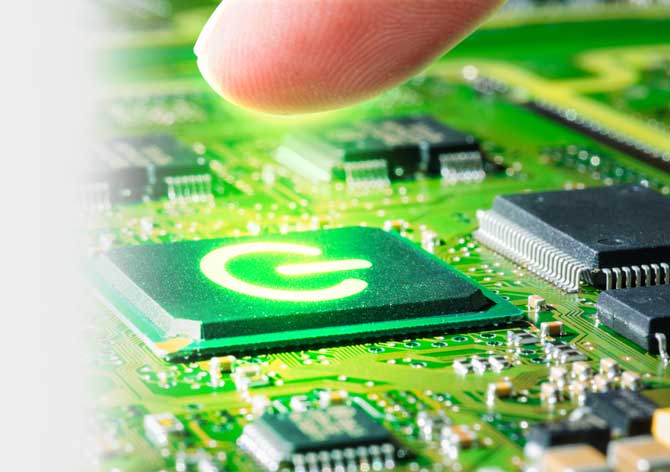Battery Management and Low Power Designs
Low power Designs for small footprint, embedded applications involving effective Power Management, Power Optimization and Battery Management. Our low power designs expertise for Battery Management in Portable Devices ensure efficient power management by decreasing energy usage, saving cost and reducing the impact on the environment.
OVERVIEW
Battery Management for portable devices or low power designs are one of the most crucial aspects of any embedded product. Broadly speaking, Power Management and Battery Management for Portable Devices involves minimizing the current usage and in some cases the peak current drawn from the power source. Various different factors guide the product development of low power designs – i.e. a target power at which it needs to operate ensuring low or minimum power consumption. Low Power Designs are a combination of software, hardware and optimized manufacturing techniques. In these combinations power reduction can be implemented at different levels of the design abstraction, i.e., system architecture, algorithms, circuit, and at the process level.
Low power designs for embedded applications use a collection of techniques and methodologies aimed at reducing the overall dynamic and static power consumption of the product. Low power designs are driven by the expectation of the manufacturer and the user on the duration of time a product needs to operate before being depleted of the available power.
Battery Management for Portable Devices
With 25 years of experience in hardware design and software development for embedded devices, We, at Mistral offer effective and efficient power management techniques for embedded low power designs. We offer solutions to implement power management, low power designs and offer Battery Management for Portable Devices using techniques to lower heat dissipation and increase system stability. The performance of low power designs is highly dependent on adequate power and battery management.
Embedded devices are being packed with more and more features while the power budget has not changed much. This requires effective battery management using the available hardware and software resources. Power and Battery Management for Portable Devices can be implemented at different levels of low power designs – silicon, hardware or software. Power optimization and battery management for portable devices can be done via energy efficient peripherals and adaptive digital systems to implement low power designs and power aware software programs.
Low power Designs
Power is a key differentiator in many designs, and for IoT and edge devices it has become a competitive differentiation. Product development companies are continuously pushing the boundaries on new features and functionality, all packed into portable, handheld, and battery powered devices. Low power designs are a set of techniques and methodologies aimed at reducing the overall dynamic and static power consumption of ICs. Mistral’s engineering team has the experience and expertise needed to build power efficient designs that ensure low power consumption, effective power optimization and efficient battery management for portable devices.
Our battery management techniques for low power designs ensure lowering of heat dissipation, increasing system stability, implementation of Power Management at silicon and software level ensuring less energy usage, saving cost and reducing the impact on the environment. Our expertise in low power designs and battery management for portable designs include optimizing charging circuits, developing battery gauges to ensure longest possible run-time while ensuring data protection, and implementing safety circuits that provide multiple independent levels of protection for highly energetic batteries.
Mistral has worked with global product developers to build energy-efficient low power designs ensuring Battery Management for Portable Devices by implementing efficient power optimization techniques. These power optimized designs are based on the latest multi-core processors like ARM Cortex A8, ARM Cortex A9, ARM Cortex A15 and open-source OSes like Android and Embedded Linux. Click here to read a blog on Power Management – Hardware-Software Co-design and Power Optimization for feature rich devices.
EXPERTISE
- Power Optimization: Timeout Policies, Predictive Policies and Stochastic Policies
- Battery Management for Portable Devices and Low power designs
- Battery Management: Battery Fuel Gauge and Battery Calibration
- Gated clock logic for PLD devices

RESOURCES
-
Case Study
Portable Desktop Magnifier for low vision with efficient Battery Management
-
White Paper
Different aspects of HW-SW co-design with respect to embedded product design
-
Technical Article
Power and Battery Management – Power Spikes isolation to avoid corruption within sensitive ICs solutions
-
Blog
Power and Battery Management – HW SW Co-design
-
Blog
Power Optimization on feature–rich devices
-
Infograhics
Power Optimization and Battery Management
-
Blog
ARM Technologies and its significance in Embedded Domain
-
Case Study
Smart-sleeve for iPhone enabling Dual SIM functionality
-
Related Topics
Power Integrity Analysis
-
Case Study
Head-mounted Voice Activated, Gesture Controlled Wearable Accessory for Mobile Devices




